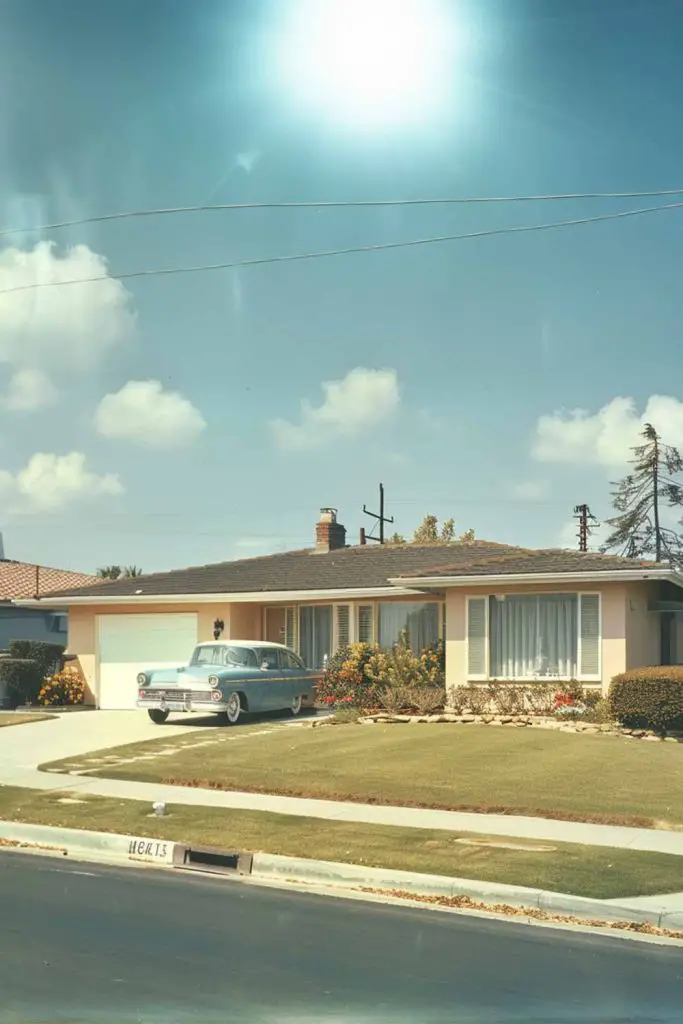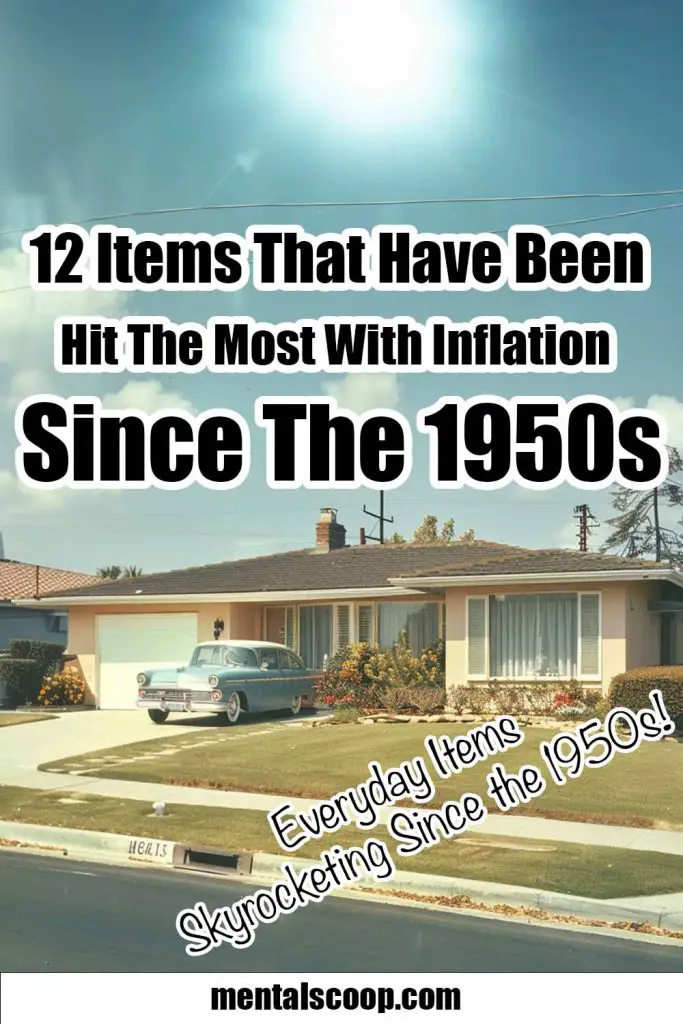12 Items That Have Been Hit The Most With Inflation Since The 1950s

Inflation is an economic phenomenon that affects the purchasing power of money over time. Since the 1950s, the value of the dollar has declined, and prices of goods and services have increased significantly.
Some items, however, have been more affected by inflation than others. In this blog, we’ll explore 12 items that have been hit the most with inflation since the 1950s.
1. Housing
Housing costs have skyrocketed since the 1950s. In the mid-20th century, a modest home in the United States could be purchased for around $8,000 to $12,000. Today, the median home price in the U.S. is over $300,000.
This staggering increase is due to a combination of factors, including population growth, urbanization, and increased demand for housing in desirable areas.
2. College Tuition
The cost of higher education has outpaced general inflation rates by a significant margin. In the 1950s, a year of college tuition at a private institution might have cost around $600. Today, that same year can cost upwards of $50,000 at top private colleges.
Even public universities, which were once affordable options for many, have seen dramatic tuition hikes.
3. Healthcare
Healthcare costs have surged dramatically since the 1950s. Back then, a visit to the doctor might have cost a few dollars, and hospital stays were relatively affordable.
Today, the cost of healthcare is a significant burden for many families, with medical bills running into thousands of dollars for even routine procedures. The introduction of advanced medical technologies, pharmaceuticals, and administrative costs have all contributed to this inflation.
4. Automobiles
The price of automobiles has seen a steady increase over the decades. In the 1950s, a new car could be purchased for around $2,000. Today, the average cost of a new car is approximately $40,000.
Improvements in technology, safety features, and increased manufacturing costs have all played a role in this rise.
5. Groceries
While not as dramatic as housing or education, grocery prices have also seen significant inflation. In the 1950s, a loaf of bread cost around $0.14, while today it can be over $2. Similarly, a gallon of milk cost about $0.82 in the 1950s, compared to around $3.50 today.
Factors such as supply chain costs, agricultural policies, and changes in consumer preferences have influenced these price increases.
6. Gasoline
Gasoline prices have been subject to wide fluctuations due to geopolitical events, changes in supply and demand, and inflation. In the 1950s, a gallon of gas cost around $0.27. Today, prices vary but often hover around $3 to $4 per gallon.
The increasing demand for fuel, combined with periodic supply constraints and environmental regulations, have contributed to this inflation.
7. Rent
Rent prices have surged alongside home prices. In the 1950s, renting an apartment might have cost $50 per month. Today, the average monthly rent for a similar apartment can be over $1,500, depending on the location.
Urbanization, increased demand for rental properties, and limited housing supply have driven this inflation.
8. Electronics
While the price of some consumer electronics has decreased due to technological advancements, other electronics, particularly those incorporating cutting-edge technology, have seen price increases. In the 1950s, a black-and-white television cost around $200.
Today, a high-end 4K television can cost several thousand dollars. The rapid pace of innovation and consumer demand for the latest features have fueled these price hikes.
9. Air Travel
Air travel has become more accessible, but prices have also increased. In the 1950s, a domestic round-trip flight might have cost around $100. Today, the same trip can cost several hundred dollars, depending on the destination and time of year.
Rising fuel costs, security measures, and changes in the airline industry have contributed to the inflation in air travel prices.
10. Clothing
Clothing prices have increased, though not as drastically as some other items. In the 1950s, a new dress might have cost around $10.
Today, a similar dress could cost anywhere from $30 to $100 or more, depending on the brand and quality. The globalized nature of the clothing industry, changes in fashion trends, and labor costs have all influenced these price increases.
11. Entertainment
The cost of entertainment has also seen inflation. In the 1950s, a movie ticket cost about $0.50. Today, a ticket can cost over $10, and even more for premium formats like IMAX or 3D.
Similarly, the price of concert tickets, amusement parks, and other forms of entertainment have all risen significantly. The rising costs of production, marketing, and the increasing demand for high-quality experiences have driven these prices up.
12. Insurance
Insurance premiums have increased substantially since the 1950s. This includes health insurance, car insurance, and homeowner’s insurance. For example, car insurance might have cost around $100 per year in the 1950s. Today, annual premiums can easily exceed $1,000.
The rising cost of claims, increased coverage options, and regulatory changes have all contributed to the inflation in insurance costs.
Inflation is an inevitable part of economic life, and its effects are felt across all sectors of the economy. While some items have seen relatively modest price increases, others have been hit particularly hard.
Understanding the historical context of these price changes can help us appreciate the economic forces at play and better prepare for the future. Whether it’s housing, education, or everyday necessities, being aware of how inflation affects our lives is crucial for making informed financial decisions.

More interesting articles you may be interested in reading:

